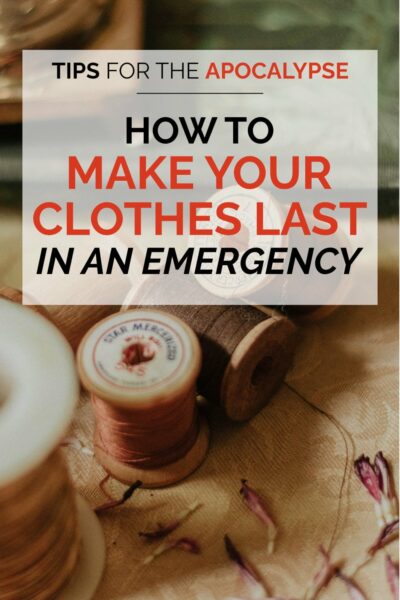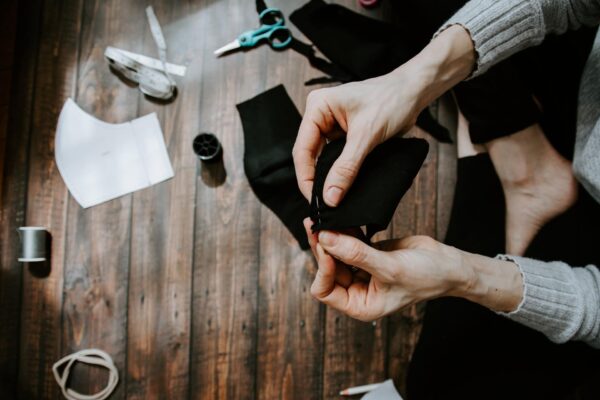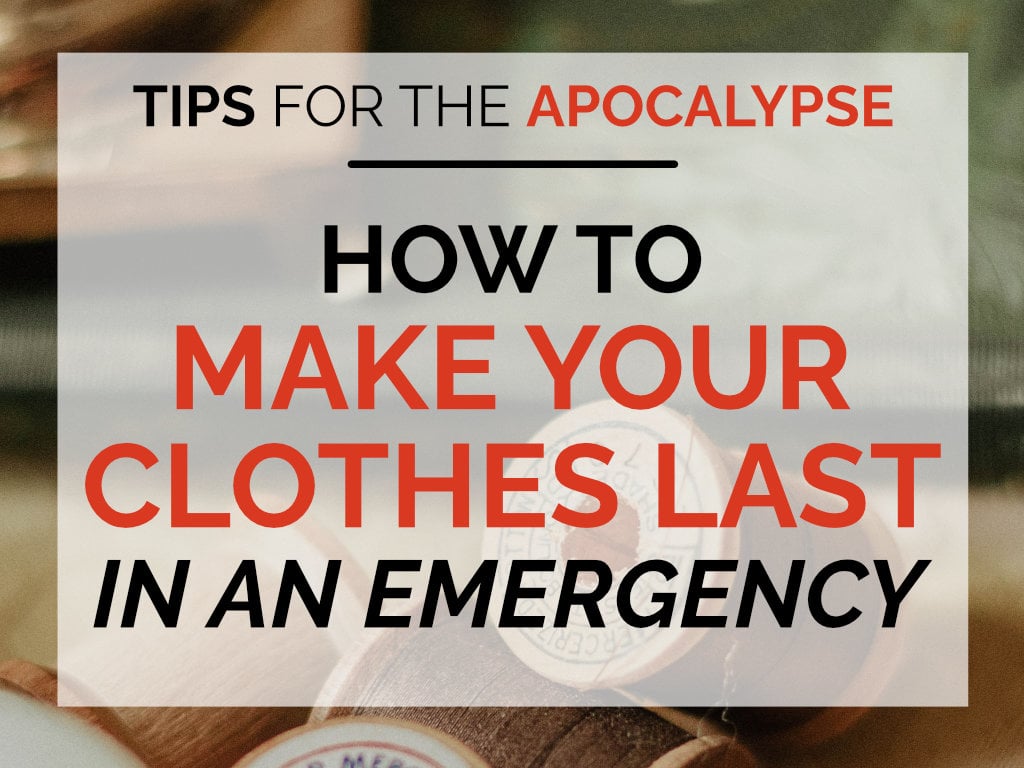How To Make Your Clothes Last in Emergencies
In a world where fast fashion is the norm, fewer people learn how to make repairs to their clothing. Have you ever thought about how important clothing is to our survival? It’s the most basic form of shelter humans have. It keeps us warm in the cold, keeps us safe from sunburns, and offers protection from bugs, wind, and scrapes. But what happens in the apocalypse when there are no boutiques or department stores to shop in? What do we do when we only have the clothes on our backs? (Or in our wardrobes?)
In this Tips for the Apocalypse article, we’ll go over how you can make your clothes last. As with our other articles in this series, these tips can be practical for your day-to-day life too. Just think back to the start of the Coronavirus pandemic in 2020—sewists the world over could hardly keep up with the demand for handmade cloth masks. You never know when your new skills will come in handy!
Where to Start and What to Learn
The most important sewing skills to learn in case of a long-lasting emergency are:
- Making repairs
- Sewing garments
- Hand sewing

Photo by Benigno Hoyuela on Unsplash; text elements added by Total Prepare.
What Supplies Should You have?
It also helps to keep a small stock of supplies to work with. Most sewing supplies (especially for hand sewing) are small and therefore take up little space. Our top suggestions are:
- Fabric scissors (don’t cut paper or other materials with them!)
- Sewing needles
- A seam ripper
- A measuring tape
- Spools of thread in various colours, like black, white, and brown
- A pincushion with pins
- Chalk or a water-soluble white pencil
Your local dollar and craft stores will carry most or all of these materials. And if you don’t have the funds or space for these, even a tiny pocket-sized sewing kit is better than nothing!
Making Repairs
No piece clothing lasts forever. In a catastrophic emergency, you’ll need to know how to get the most out of your wardrobe, no matter how extensive it is. But if you know how to make repairs and repurpose fabric into other items, you’ll have a valuable skill critical for long-term survival. This is especially true in situations where you might be doing more physical labour, like farming your own food or building shelters.
Clothes will generally have either a rip or a hole in them when they break. Rips can often be recovered by simply sewing the edges back together with good, strong stitches, if they have torn cleanly. For ragged rips and holes, however, it is important to invest the time and practice into sewing patches onto clothing to reinforce the cloth.
There are all kinds of great places to learn these skills: parents, grandparents, books, and the internet all come to mind, but check your local sewing stores for potential courses and workshops too.
Sewing Garments
When I sewed my first garment (a tunic for a renaissance fair), I was amazed by how simple yet difficult the process was. In an emergency, it is unlikely that you will have pre-printed patterns lying around, but that’s okay! With a little practice you can actually use clothes you already have and like to model your DIY versions from.
Clothes are made from panels of cloth, and because of the way people bend and move, it is often more complicated then just cutting out two ‘t-shirt shapes’ and sewing them together. You need things like gussets and that’s a whole different ball game.
If you have a simple piece of clothing you want to replicate, take a good, close look at it. Where are the stiches? How many panels of cloth are used? What shapes are they? How are they joined together, especially where more pieces meet?
A Basic Overview of Sewing a Garment
Ideally, you will also have giant pieces of paper handy. Trace each panel of cloth as best you can onto your paper, or if you have no paper, directly onto your fabric using chalk or pen. In an emergency you may be using bedsheets, curtains, towels, etc. for makeshift fabric. Leave an inch or so of extra fabric around the edges of each panel to leave room for stitching, also known as a “seam allowance”. Keep track of which part of the garment you’re tracing. It wouldn’t do to accidentally sew together mismatched panels!
If using paper, cut out the panels and lay them on your fabric until you find a configuration that allows you to cut your fabric efficiently with the least possible waste. Trace the pieces and cut out your new panels.
Thread a needle and sew the panels together in the same configuration they are in on the original garment. If you have pins handy, these are great for holding the pieces together and helping the sewing to stay even. If you make a mistake, unpick the stitches and try again. You can do this by inserting your needle underneath the thread and pulling it up to get a better grip on it.
You won’t be making designer outfits with this method, but you should be able to create some basic clothing to keep you covered in an emergency.
*Note—try to pick fabrics and garments that are made from similar materials. Trying to imitate a stretchy t-shirt with inflexible curtain fabric will not have a good result.

Photo by Kelly Sikkema on Unsplash
Hand Stitching
We’ve mentioned before that power may be hard to come by in a long-term emergency. Because of this, it is a good idea to learn how to sew by hand, in case you are not able to access (or simply don’t own) a machine. If you happen to have one of those antique, pedal-powered sewing machines, that would be a good option (and cool) option.
Summary
Sewing is one of the top apocalypse skills to learn. It helps you to keep clothes in good condition and to make new ones when the old are beyond repair. Due to a potential lack of electricity, it is good to practice stitching by hand, as well as with a machine.
Thank you for reading! If you liked this post, or are enjoying our ‘Tips for the Apocolypse’ series, follow us on Facebook, Twitter, Instagram, and Pinterest, or join our mailing list below to make sure you never miss an article!
–This article was written by Zenia Platten – Author and Emergency Preparedness Professional







